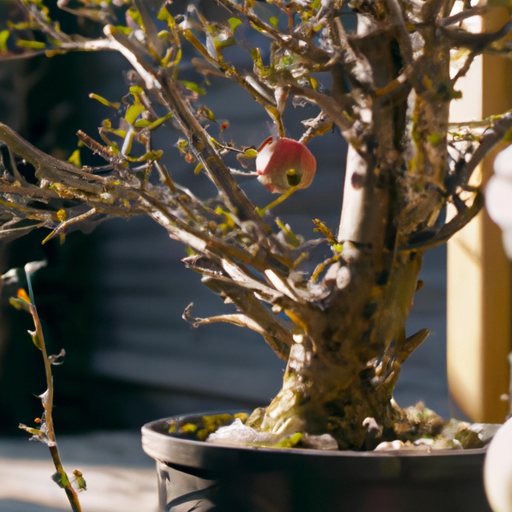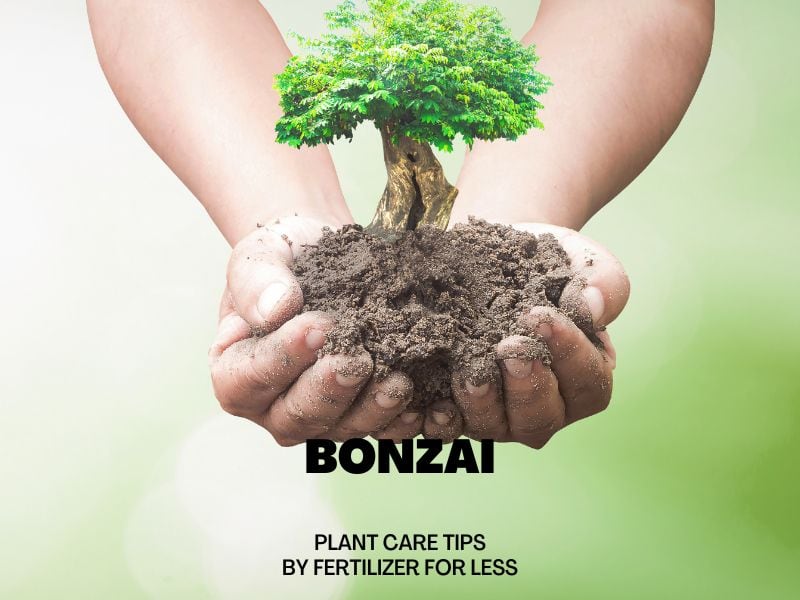Table of Contents
The Basics of Bonsai Apple Tree Care: What You Need to Know

If you’re looking for a unique and beautiful addition to your home, a bonsai apple tree is a great choice! Bonsai apple trees are a fun and rewarding way to bring a bit of nature indoors. But, like any other plant, they require special care to stay healthy and thrive. Here’s what you need to know about bonsai apple tree care.
Location: Bonsai apple trees need plenty of light, so make sure to place them in a sunny spot. Avoid direct sunlight, as this can cause the leaves to burn.
Watering: Bonsai apple trees need to be watered regularly, but not too much. Water your tree when the soil is dry to the touch, and make sure to water the entire root system.
Fertilizing: Bonsai apple trees need to be fertilized every two weeks during the growing season. Use a balanced fertilizer and follow the instructions on the package.
Pruning: Pruning is an important part of bonsai apple tree care. Prune your tree in the spring and summer to keep it healthy and encourage new growth.
Repotting: Repot your bonsai apple tree every two to three years. Make sure to use a well-draining soil and a shallow pot.
With the right care, your bonsai apple tree will be a beautiful and unique addition to your home. With a little bit of patience and dedication, you’ll be able to enjoy your tree for years to come!
Pruning and Training Techniques for Bonsai Apple Trees
Pruning and training techniques are essential for growing healthy bonsai apple trees. With the right care, these miniature trees can produce beautiful, full-sized apples. Here are some tips to help you get started.
Pruning: Pruning is an important part of bonsai apple tree care. Pruning helps to keep the tree healthy and encourages new growth. Start by removing any dead or diseased branches. Then, use sharp pruning shears to trim back any branches that are growing too long or too wide. Be sure to leave some of the smaller branches intact, as these will help the tree to produce fruit.
Training: Training is the process of shaping the tree to create a desired shape. This can be done by wiring the branches into place or by using a technique called “clipping and growing”. With wiring, you use thin copper or aluminum wire to gently bend the branches into the desired shape. With clipping and growing, you use sharp pruning shears to trim the branches into the desired shape.
Fertilizing: Fertilizing your bonsai apple tree is important for promoting healthy growth. Use a balanced fertilizer that is specifically designed for bonsai trees. Apply the fertilizer according to the instructions on the package.
Watering: Bonsai apple trees need to be watered regularly. Water the tree deeply, but avoid overwatering. Allow the soil to dry out between waterings.
These are just a few tips for pruning and training bonsai apple trees. With the right care, these miniature trees can produce beautiful, nearly full-sized apples.
How to Choose the Right Soil for Your Bonsai Apple Tree
Choosing the right soil for your bonsai apple tree is essential for its health and growth. The right soil will provide the tree with the necessary nutrients and drainage it needs to thrive. Here are some tips to help you choose the right soil for your bonsai apple tree.
First, consider the type of soil your tree needs. Bonsai apple trees prefer a well-draining soil that is slightly acidic. A good mix for bonsai apple trees is a combination of akadama, pumice, and lava rock. Akadama is a clay-like soil that helps retain moisture and nutrients. Pumice is a lightweight, porous material that helps with drainage and aeration. Lava rock is a coarse material that helps with drainage and aeration as well.
Second, consider the size of the pot you are using. If you are using a shallow pot, you will need a soil mix that is more lightweight and porous. If you are using a deeper pot, you will need a soil mix that is heavier and more dense.
Third, consider the climate you live in. If you live in a dry climate, you will need a soil mix that is more moisture-retentive. If you live in a humid climate, you will need a soil mix that is more well-draining.
Finally, consider the type of fertilizer you will be using. If you are using a slow-release fertilizer, you will need a soil mix that is more nutrient-rich. If you are using a liquid fertilizer, you will need a soil mix that is more well-draining.
Choosing the right soil for your bonsai apple tree is essential for its health and growth. With these tips, you can find the perfect soil mix for your bonsai apple tree.
The Benefits of Growing a Bonsai Apple Tree in Your Home
Growing a bonsai apple tree in your home can be a rewarding experience. Not only will you have a beautiful, miniature tree in your home, but you will also enjoy a variety of benefits. Here are some of the advantages of growing a bonsai apple tree in your home:
1. Aesthetic Appeal: Bonsai apple trees are incredibly attractive and can add a unique touch to any home. The small size of the tree makes it perfect for indoor spaces, and the delicate leaves and branches create a beautiful display.
2. Low Maintenance: Bonsai apple trees are surprisingly low maintenance. They require minimal pruning and watering, and they can survive in a variety of climates.
3. Stress Relief: Taking care of a bonsai apple tree can be a great way to reduce stress. The repetitive motions of pruning and watering can be calming and therapeutic.
4. Health Benefits: Bonsai apple trees can provide a variety of health benefits because sometimes, they actually fruit! The apples they produce are packed with vitamins and minerals, and the tree itself can help to purify the air in your home.
Growing a bonsai apple tree in your home can be a great way to add beauty and health benefits to your home. With minimal maintenance and effort, you can enjoy the aesthetic appeal and health benefits of a bonsai apple tree.


